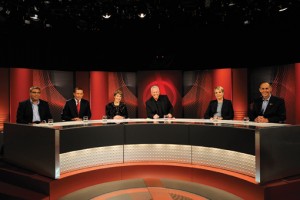I’ll take that as a comment: Twitter on TV
 Embracing Twitter can offer audience interaction and instant insight into how your program is being received beyond just a ratings number. At EncoreLive, moderator Magdalena Roze and panellists Amanda Collinge, Steven Murphy and First Dog on the Moon (Andrew Marlton) waded into the Twitterstream.
Embracing Twitter can offer audience interaction and instant insight into how your program is being received beyond just a ratings number. At EncoreLive, moderator Magdalena Roze and panellists Amanda Collinge, Steven Murphy and First Dog on the Moon (Andrew Marlton) waded into the Twitterstream.
An audience show-of-hands gave an instant response to the EncoreLive Conference of how many people were still not sold on Twitter and its capabilities, but those beyond the walls had no idea how many hands were raised – a quick tweet could have told the rest of the world.
In February, Channel Nine cancelled Ben Elton’s Live from Planet Earth after just three episodes – not just from low ratings, but from bad press on Twitter. “The audience let us know very quickly that they weren’t enjoying the program,” FremantleMedia publicist Steven Murphy admitted. By the second episode, “the sledging had become part of the audience member’s enjoyment. The public had spoken.”
Twitter has given an immediate platform for which the audience’s opinions can be heard by TV presenters, producers, media buyers, journalists and each other. The everyman and his dog has a voice. Andrew Marlton, better known as Crikey.com’s cartoonist First Dog on the Moon, can be heard by his 11,400 followers regularly badgering the TV while tweeting.

